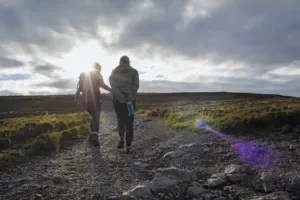AUSTIN, Texas—This year, the laser show at GONE TO TEXAS ’99 will be even more spectacular than in the past, promising to provide colorful, lasting memories of the event.
Laser Spectacles Inc. will produce the laser show. It was founded by Tim Walsh, who was studying music composition at the University of North Texas in Denton in the mid-1970s, when he began using lasers to blend images with music. Walsh, who also worked as lead accompanist for that university’s department of dance, is one of the founders of Brave Combo, the popular band that will perform on the South Mall for the GTT concert and dance.
Since opening Laser Spectacles in San Marcos in 1985, Walsh said he has performed at music festivals everywhere from Guadalajara to Abu Dhabi and Uzbekistan. He also has performed at Austin’s Section 9 and Cosmic 7, Houston’s Matrix Crew, the Iguana Mirage in Dallas, with Doc Severinsen and the Phoenix Symphony, as well as with the Fort Worth and Houston symphonies.
“What we’ll be doing at the UT show is XY scanning, moving the laser beam from point to point on the tower. When I draw a picture on the Tower, I’ll be connecting dots that I’ve already selected.
“A laser leaves a line between the dots just like a kid’s coloring book. But it happens so fast, you can’t see the dots. You just the see the line all at once. It’s a line drawing.”
What Walsh is “drawing” with, in time to the music, is a glass tube filled with krypton and argon gas. UT themes will be the focus of the laser designs.
“We have a new device that came out a few years ago, a crystal device, that allows us to select and blend colors under computer control,” Walsh said. “On the Tower itself, we’ll use full-color lasers so you’ll see all the colors. There’s a great deal of green and blue and mixtures.
“For the band (Brave Combo) we’re using a YAG laser and it just does green, but it does so much green you can hardly believe it,” Walsh said.
Behind the beauty of this special GTT production stands John White, who was designated laser safety officer for UT Austin earlier this year. White, UT’s assistant director of environmental health & safety, is charged with monitoring numerous lasers and laboratories used for research and education on the UT campus.
From time to time, he is called upon to monitor the use of lasers for art and entertainment.
LASER actually stands for Light Amplification by Stimulated Emission of Radiation, and lasers vary widely in wavelength, size and purpose. Lasers have been used for everything from brain surgery and drilling holes in diamonds to major construction projects, guiding machines that lay pipelines and dig out tunnels.
White explained that a laser is a tightly focused beam of light with waves traveling together at the same frequency. A laser can restore vision by erasing cataracts.
Operation of lasers is closely regulated by state and federal governments. White, who also is UT Austin’s radiation safety officer, has written a laser safety program in collaboration with Texas A&M University’s laser safety officer, Doug Johnson. The program may serve as a model for use on other campuses.



